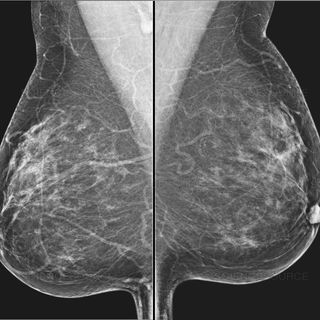
Gender Norms Cause Parents, Doctors to Miss Girls’ Signs of ADHD, Autism
Signs like daydreaming and inattention are perceived as feminine shyness.

The two most prominent signs of Attention Deficit Hyperactivity Disorder (ADHD), a condition that makes it difficult for a person to pay attention and control their behavior, are hyperactivity and impulsivity. But because these behaviors are displayed more by boys than girls, the presence of ADHD is commonly overlooked in girls — and so is the fact that it manifests differently in girls and boys.
Imagine a classroom: A boy who is considered hyperactive will have trouble sitting in the same place and show restlessness by constantly moving, shifting and rocking the chair or running around.
In the same classroom, a hyperactive girl may not be visibly restless. To be able to move and walk around the classroom, she may take on the role of a class monitor or the teacher’s helper and stay out of her seat and classroom as much as possible.
But in doing so, she’s meeting adult expectations and obeying social norms, and displaying behavior that is not disruptive to the classroom. Hence, she is more likely to be perceived as organized, easy going and hard working to achieve success, than as someone who may have ADHD.
Related on The Swaddle:
Parents of Kids With Autism, ADHD, Should Watch for Red Flags in Siblings, Experts Suggest
But the fact is, girls who have ADHD display subtler and internalized symptoms, experts say, such as sitting quietly, daydreaming, limiting anger and pain to themselves, appearing not to listen, being more verbally than physically aggressive (e.g. teasing, taunting or name-calling), and most importantly, having a wide range of mood swings.
Boys, on the other hand, show more externalized behaviors such as running, physical aggression, physical displays of frustration, talking excessively or frequently interrupting conversations.
Adults who observe the more subtle symptoms girls display won’t consider it as a red flag — but rather as just being a ‘good girl’ for being quiet or not expressing her pain. And for those girls who do deviate from the more socially acceptable behavior associated with girls, “adults around her [still] won’t connect it to a larger condition, but dismiss it as her being shy, dramatic, foolish or silly,” says psychologist Dr. Kiran Sethi from Mumbai who runs her own practice.
In India, a study found that 11.32% primary school children have ADHD. Its prevalence was found to be higher among boys (66.7%) as compared to girls (33.33%).
It’s true of global rates, too. This has led to boys being three times more likely to be diagnosed in childhood than girls, suggesting that girls go unnoticed when they are younger.
“Often, women recognize their own ADHD after one of her children has received a diagnosis,” says Dr Sethi. “As she learns more about their condition, she may begin to see similar patterns in herself.”
Failure to recognize the condition can have important implications for both diagnosis and treatment, says Dr. Sethi.
Related on The Swaddle:
What It’s Like To Live With: Adult ADHD
“Women with ADHD appear to experience more psychological distress and have lower self-esteem than men with ADHD. So lack of identification and treatment of ADHD should be a primary health concern,” she adds. “To do that, not only do the clinicians, but also teachers, mentors and parents need to be aware and sensitive about the fact that it manifests differently in both sexes so those affected can receive early diagnosis and help.”
Like with ADHD symptoms, autism spectrum disorder — a broad range of conditions characterized by challenges with social skills, repetitive behaviours, speech and non-verbal communication — also manifests differently in girls and boys. The symptoms of autism may be visible and more recognizable than those of ADHD, but the problem is that girls with autism have better social skills than boys with autism, and so are not diagnosed as easily or early as boys may be.
This could affect the age at which they can start treatment, says Dr. Shweta Wagle, a psychologist from Mumbai’s New Life Clinic. “It’s important that the diagnosis come in as early as possible because usually girls with autism [because of delayed treatment] have greater learning disabilities and face troubles academically more than boys.”
While fixated interests are common for both boys and girls with autism, girls may tend to focus on the same topics that are common with non-autistic girls such as dolls and playhouses, ponies and drawings, making it difficult to identify their condition. The difference is that boys will focus on less-typical activities such as stacking, or lining up cars. As a result, parents, schools and even doctors may miss that some girls show signs of autism.
“Hence, it becomes very important that the gender differences be considered when discussing certain mental health conditions because the symptoms are defined based on them. Not only will understanding symptoms based on gender differences help in getting access to the treatment, but it will end up improving the quality of life in the long term, for both girls and boys,” Dr Wagle says.
Anubhuti Matta is an associate editor with The Swaddle. When not at work, she's busy pursuing kathak, reading books on and by women in the Middle East or making dresses out of Indian prints.
Related


Why Cancelling Plans Gives Us Such a Rush
